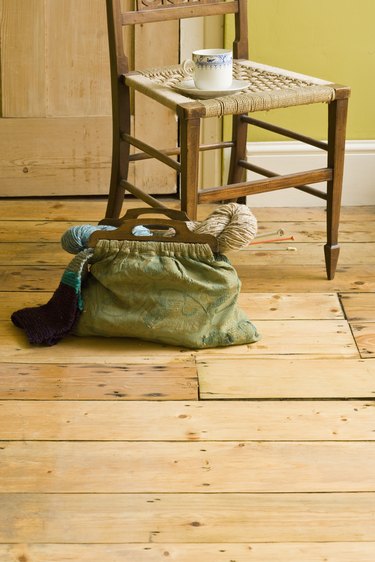
A hexagonal lap loom is used to make woven-look doilies, table runners, trivets and place mats. Thread, embroidery floss, yarn, twine or fine-gauge wire are wound on opposing pairs of pegs or nails around the perimeter of the loom. You can also connect additional looms along the eight sides to create round table covers, ponchos, shawls or lap throws.
Materials
Video of the Day
Use any flexible fiber or thin-gauge wire of your choice. Embroidery floss works best for delicate cloth such as doilies and table runners. Jute, sisal or hemp twine are good choices if you are making absorbent coasters or heat-resistant trivets. Fine yarns work well when making ponchos, shawls or lap throws. Wrap with fine-gauge wire — such as copper, black steel, silver or gold wire in any combination — to make ornamental mesh for privacy screens.
Video of the Day
Preparations
Place an odd number of pegs or nails around the perimeter of the hexagon frame if you are making your own lap loom. Wear rubber fingertip protectors or leather work gloves to prevent blisters and lacerations when winding wire. Use plastic tapestry needles when you are ready to secure each set of crossed threads. They are longer and thicker than standard needles, which makes them easy to hold and pull.
Weaving
Choose any nail or peg. Tie one end of the thread or wire you are using to the nail and turn it so that the side of the loom it is on is farthest away from you. Pull the thread or wire across the loom toward you, wrap around the starting peg's opposite peg and cross back again twice. Wrap the next closest peg to the left of the first tied peg and cross the loom to the opposite peg. Continue until every pair of pegs have been wrapped. Tie off the end of your thread or wire to the last peg you wrapped.
Finishing
Thread a tapestry needle with contrasting or coordinating wire, thread or floss. Wind the thread in your hand to make a loop. Hold the loop in your off hand while wrapping the needle around each set of crossed fibers or wires. Pass the needle through the loop and pull tight to make a knot. Continue until every set of crossed fibers or wires has been knotted.
Choose two additional contrasting colors and repeat wrapping and knotting all threads or wires until you have three layers of color on each loom. Cut the loops that are holding your woven item to the loom. If desired, use a stiff brush to agitate the fibers of the cut loops until they become fuzzy or felted.
Making Connections
To connect multiple looms, remove every even loop from the first loom and every odd loop from the second loom. Place the odd loops from the first loom over corresponding pegs on the second loom. Repeat for the even loops. Knot the pairs of loops together just like the crossed fibers.